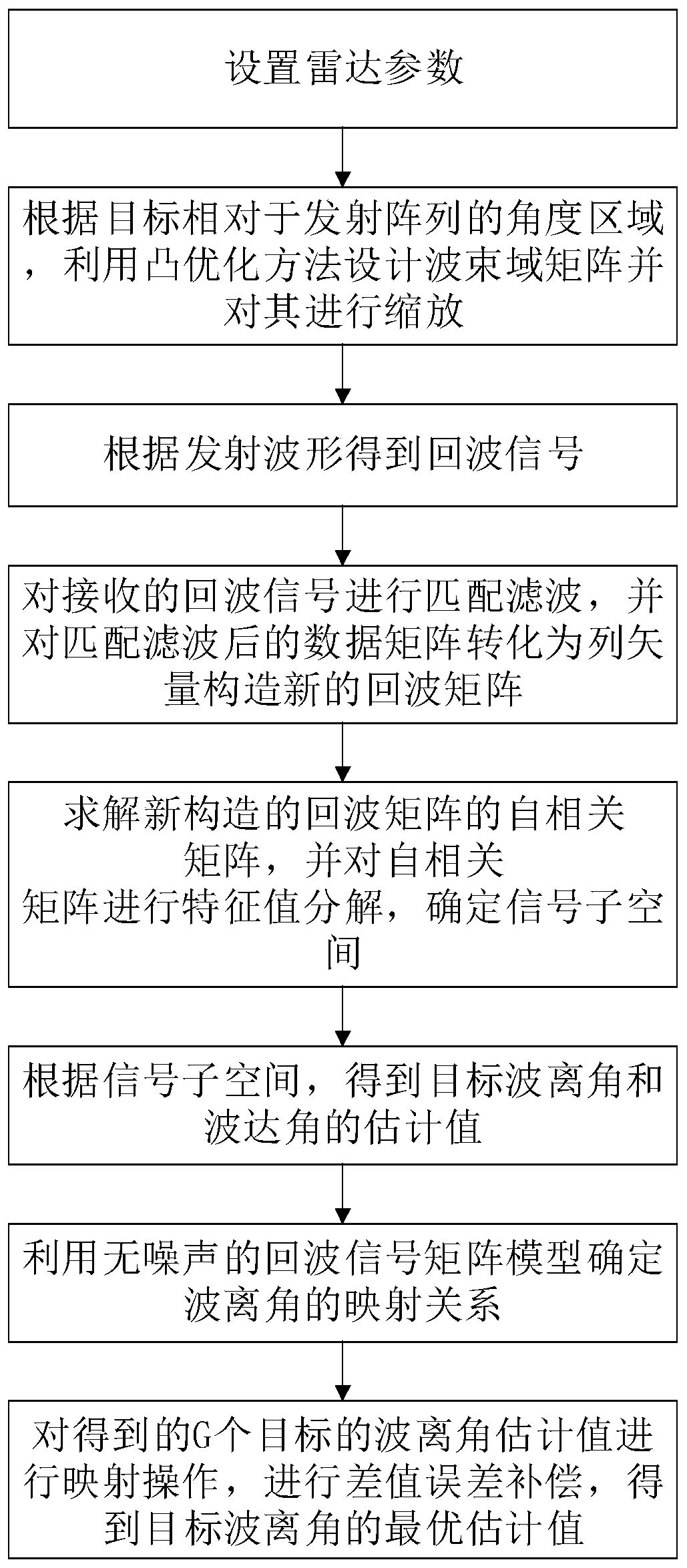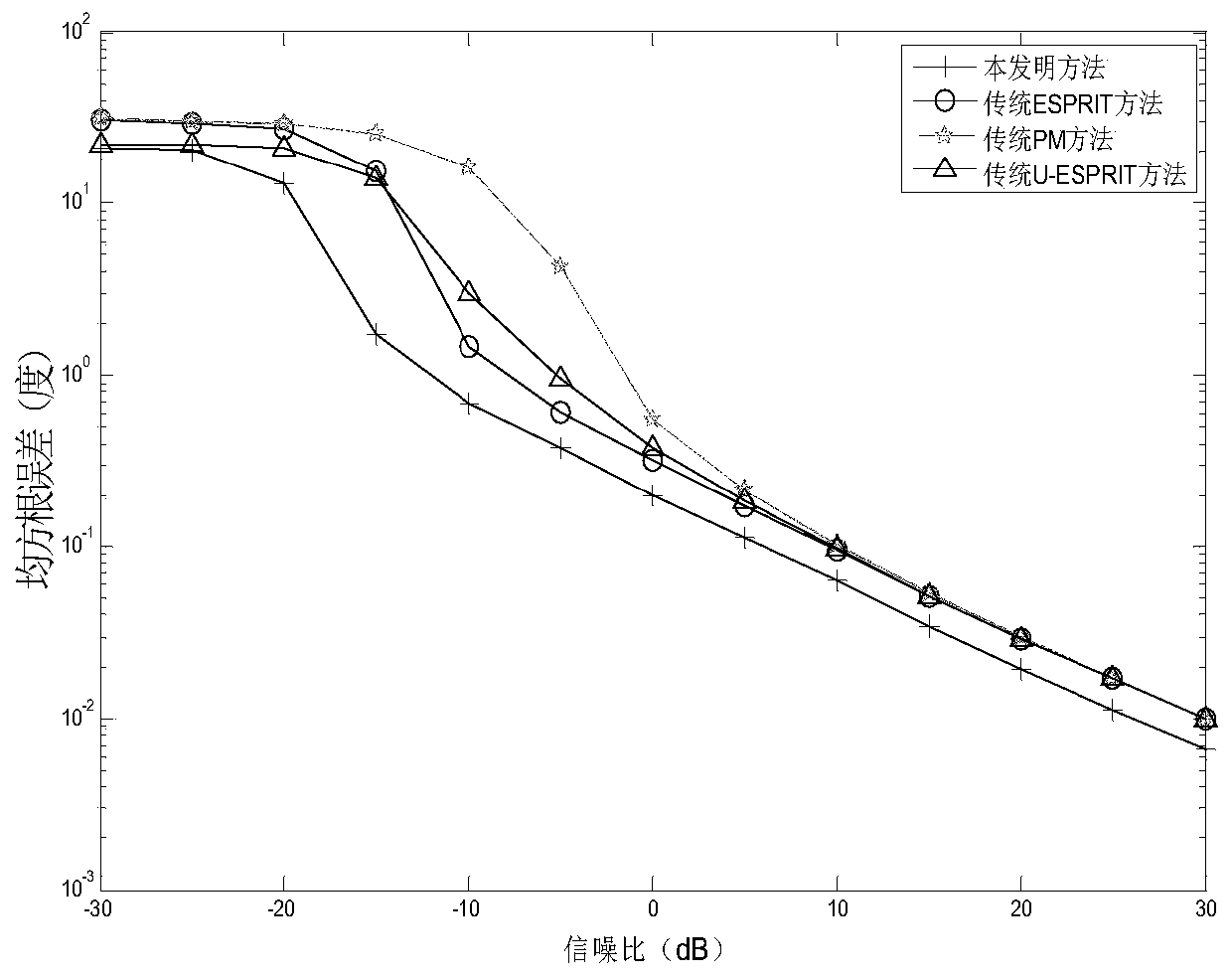Bistatic MIMO radar angle estimation method based on emission energy concentration
A technology for transmitting energy and angle estimation, applied in the field of radar, can solve the problems of reducing coherent gain and angle measurement performance, and achieve the effects of reducing loss, improving angle measurement accuracy, and reducing wave departure angle error
- Summary
- Abstract
- Description
- Claims
- Application Information
AI Technical Summary
Problems solved by technology
Method used
Image
Examples
Embodiment Construction
[0030] The embodiments and effects of the present invention will be clearly and completely described below in conjunction with the accompanying drawings. Apparently, the described embodiments are only some of the embodiments of the present invention, not all of them. Based on the embodiments of the present invention, all other embodiments obtained by persons of ordinary skill in the art without making creative efforts belong to the protection scope of the present invention.
[0031] refer to figure 1 , the implementation steps of this embodiment are as follows:
[0032] Step 1, set bistatic MIMO radar parameters
[0033] Set the number of transmitting array elements of the bistatic MIMO radar as M, M>0, the number of receiving array elements as N, N>0, the total transmitting energy of the bistatic MIMO radar as E>0, and the spatial dimension of the transmitting beam domain as L, L 0;
[0034] Step 2. According to the position of the target relative to the angular area of ...
PUM
 Login to View More
Login to View More Abstract
Description
Claims
Application Information
 Login to View More
Login to View More - R&D
- Intellectual Property
- Life Sciences
- Materials
- Tech Scout
- Unparalleled Data Quality
- Higher Quality Content
- 60% Fewer Hallucinations
Browse by: Latest US Patents, China's latest patents, Technical Efficacy Thesaurus, Application Domain, Technology Topic, Popular Technical Reports.
© 2025 PatSnap. All rights reserved.Legal|Privacy policy|Modern Slavery Act Transparency Statement|Sitemap|About US| Contact US: help@patsnap.com



